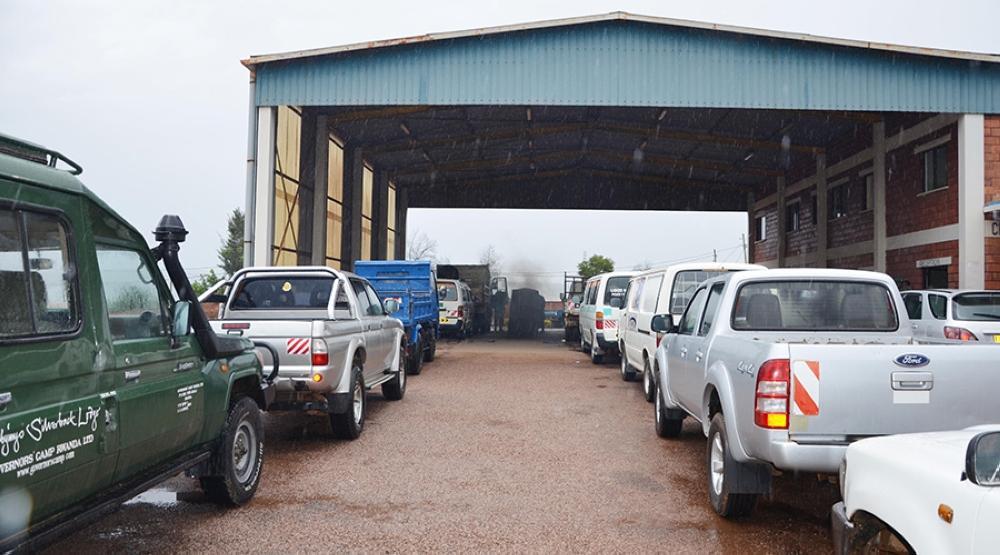Africa-Press – Rwanda. Environmentalists have welcomed the move to add motorcycles in vehicle emissions testing, while taxi moto operators said that despite the environmental benefits, there are associated costs and operational delays that should be eased.
The Rwandan government on Thursday, July 24, announced new changes for vehicle emission testing, which will apply to all vehicles, including motorcycles.
Under the new regulations, vehicles will undergo an initial emissions inspection. If a vehicle meets the required standards, it will be cleared. If not, the owner must repair the vehicle and bring it back for a second test—referred to as a reinspection—within two weeks.
The reinspection will cost half the price of the initial test. If the reinspection is delayed beyond two weeks, the owner must pay the full initial inspection fee again.
For motorcycle engines and other special engines at the same level as motorcycles, the first test is Rwf16,638, while the cost of reinspection (within two weeks) will be Rwf8,319.
The rollout is expected within a month, according to the Rwanda Environment Management Authority (REMA).
According to environmental economist and climate activist, Concorde Kubwimana, testing motorcycle emissions is necessary, as they comprise a major mode of transport countrywide, making the transport sector one of the biggest air polluters.
“Motorcycles account for over 55 per cent of registered vehicles in Rwanda, with many using ageing two-stroke engines that emit up to 30 times more hydrocarbons and 10 times more carbon monoxide than modern cars,” Kubwimana told The New Times.
“In 2019, air pollution was linked to over 9,600 premature deaths in Rwanda. Mandatory emissions testing is a critical step to reduce harmful pollutants, protect public health, and accelerate Rwanda’s transition to cleaner, electric mobility,” he noted.
Abias Maniragaba, an environmental health expert, said that motorcycles emit more gases than buses when emissions are measured per capita (per person), taking the total amount of emissions by a vehicle and divide it by the number of passengers it is transporting.
“If you test a bus’s emissions and divide by the passengers in the bus, emissions are lower per capita (per person). But a motorcycle with one person or two has higher emissions per capita compared to those in a bus. Motorcycles are so many and they do a lot of fast movements everywhere, consuming a lot of polluting fuel. Emissions testing should be mandatory,” he explained.
He said given that motorcycles had no technical inspection, owners were using them until they became too old to move, without being aware of the amounts of emissions polluting the air.
He said that current air quality testing stations indicate a crisis, with motorcycles contributing significantly.
“The vehicles emit significant pollutants such as PM2.5, PM10, nitrogen, sulphur, and others.”
The environmental expert said that diseases related to emissions are costly in terms of medical treatment for the country.
“There are cost implications for vehicle owners, but we should prioritise cost sharing in terms of ensuring a healthier environment.
With the new changes, they will benefit in terms of cost reduction more than they think. This is because without technical control or inspection and emissions testing for motorcycles, they were emitting a lot and consuming a lot of fuel,” he noted.
Taxi moto, car operators’ mixed reactions
Despite the environmental benefits of the emissions testing, vehicle owners have raised concerns about associated costs and operational delays, which they say should be eased.
Noel Nkurikiye, Secretary General of the Rwanda Professional Truck Drivers Union and Managing Director of Consultant Tarzan of Transport Rwanda (COTATRARWA), a company operating a fleet of heavy-duty trucks, said the new regulations will likely increase their expenses without a corresponding rise in revenue.
“We are going to spend more, yet our income has not changed,” he said.
“The testing process might take longer than before. We suggest that the process be simplified and, more importantly, that stakeholders like us are consulted in the future before such decisions regarding our operations are taken. As it stands, we’re being asked to comply without having been involved in the decision-making,” he said.
However, for Charles Hagenimana, a bus driver, emissions testing is a necessary and manageable measure. He believes it will not interfere with daily operations.
“Vehicles releasing a lot of emissions harm not just the environment but also people’s health,” he said.
“Controlling them is essential. We already undergo mechanical inspections twice a year, so this is not a major shift.”
However, for some taxi moto operators, the changes come as an additional cost of operating.
Christophe Murenzi, who operates a motorbike in Kigali, pointed out that they are already grappling with high operational costs, including insurance premiums and maintenance.
“My motorbike is over six years old and I pay more than Rwf230,000 annually in insurance,” he said.
“Those with newer bikes still pay around Rwf180,000. When you add maintenance costs and now the new emissions test, we will be overwhelmed.”
Eric Niyonzima, another taxi moto operator in the city, agreed that the principle behind the testing is sound, especially for health and environmental reasons, but said that practical challenges remain.
“Testing emissions is good, not just for climate and health, but it helps us attract more customers,” he noted.
“People don’t want to ride bikes that emit a lot of smoke. We even enjoy riding cleaner bikes.”
Nonetheless, he warned that the limited number of testing stations could create inefficiencies.
“You can spend a whole day at a testing centre without being served, and might have to come back another day. If your motorbike fails the test, you’ll have to fix it and return, again, possibly waiting another full day,” he said.
“I don’t complain about the fees themselves, but the delays might make it difficult.”
Away from the drivers, others are already anticipating ripple effects. Clarisse Mukakarangwa, a vegetable vendor in Nyabugogo market, expressed concern that increased costs for motorists might be passed on to passengers and customers.
“The drivers will find a way to recover what they spend. I spend around Rwf150,000 on transporting goods every week,” she said.
Study allays fears
Rwanda could save $200 million from 2023 to 2030 by reducing air pollution in the transport sector in Kigali city alone, a new study has estimated.
The study was conducted by a team of researchers and air quality specialists. Egide Kalisa, one of the researchers, said, “If the country records an annual reduction of 10 per cent of air pollution in the transport sector in Kigali City, it could save $200 million in a period of eight years from 2023 to 2030.”
The study says the reduction of air pollution in the transport sector in Kigali could save $100 million by 2026, and more than $200 million by 2030.
“The savings could be made considering the money which the government invests in treating diseases caused by air pollution and the number of hospitalised people.”
Juliet Kabera, the Director General of the Rwanda Environment Management Authority (REMA), stated: “PM2.5 particles from vehicle emissions cause diseases. A poorly maintained vehicle releases a high amount of these particles, which, when inhaled by a person, can lead to respiratory illnesses, heart disease, and lung cancer.”
TAGS: Vehicle testing emissions, environment, transport, respiratory diseases, air pollution, taxi moto operators
For More News And Analysis About Rwanda Follow Africa-Press






